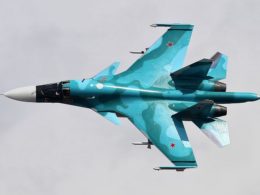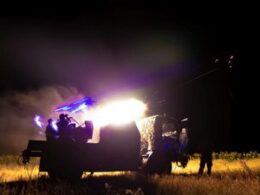For the first time in the ongoing Russo-Ukrainian war, Russia targeted Ukraine with an intercontinental ballistic missile (ICBM). The Russians attacked central-eastern Ukraine's Dnipro City with an unspecified ICBM, a Kinzhal aeroballistic missile and several Kh-101 air-launched cruise missiles, the Ukrainian Air Force says.
According to Ukraine’s Air Force, Russia targeted industrial facilities and critical infrastructure in Dnipro. The attack occurred early on 21 November between 5:00 and 7:00 a.m. and included multiple missile types: an ICBM launched from Russia's Astrakhan Oblast, about 1,000 km away, a Kinzhal aeroballistic missile fired from a MiG-31K fighter jet in Tambov Oblast, and seven Kh-101 cruise missiles from Tu-95MS bombers over Volgograd Oblast, the Air Force said. Six of the Kh-101 missiles were reportedly intercepted by Ukrainian air defenses, but other missiles caused damage.
Dnipro’s Regional Military Administration reported
two injuries: a 57-year-old man treated on-site and a 42-year-old woman hospitalized. The strikes damaged an industrial enterprise, a rehabilitation center for people with disabilities, a boiler facility, and two one-family homes, according to the reports from local authorities. Fires broke out at multiple locations, including a garage cooperative where nine garages were damaged. Emergency services extinguished all fires and assisted affected residents.
Public broadcaster Suspilne confirmed explosions in Dnipro during the attack, reporting that one series of blasts occurred at 5:17 a.m., followed by another at 7:14 a.m. One of the airspace monitoring channels reported
that the 5:17 ICBM strike on Dnipro was immediately followed by a Kinzhal missile impact, with shared video allegedly capturing the sounds of both explosions heard in the city.
The Air Force did not disclose the ICBM’s warhead type, whether it hit its intended target, or additional details about its impact.
Related:
- Russian drones hit Hlukhiv dormitory in Sumy Oblast, killing at least nine, including 8-year-old (updated)
- Russia braces for ATACMS strikes on airfields, yet expectations should be tempered
- UK sanctions Russian officials over systematic illegal deportation of Ukrainian children
- Russia can produce 50 Kh-101 cruise missiles per month, says Ukrainian intelligence
- Death toll rises to 11, including 2 children, in Russian missile strike on Ukraine’s Sumy
- Russia launches only 11 explosive drones after yesterday’s massive attack
- Ukrainian F-16s intercept “about 10” targets in Russia’s morning missile attack, civilian death toll reaches 5
- Russian artillery strikes Dnipro’s Nikopol, killing two rail workers, injuring five other civilians
- Massive Russian attack on Ukraine’s power grid with 90 drones and 120 missiles causes power outages and casualties (updated)





